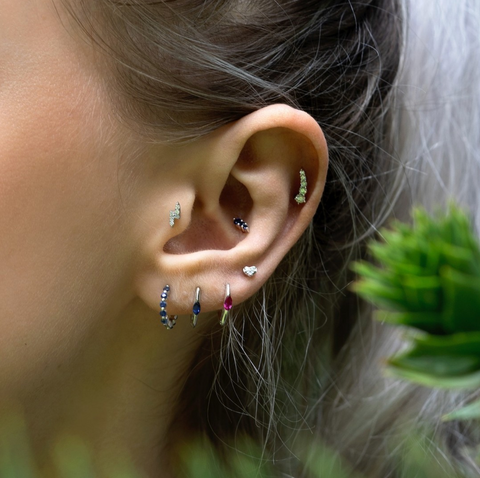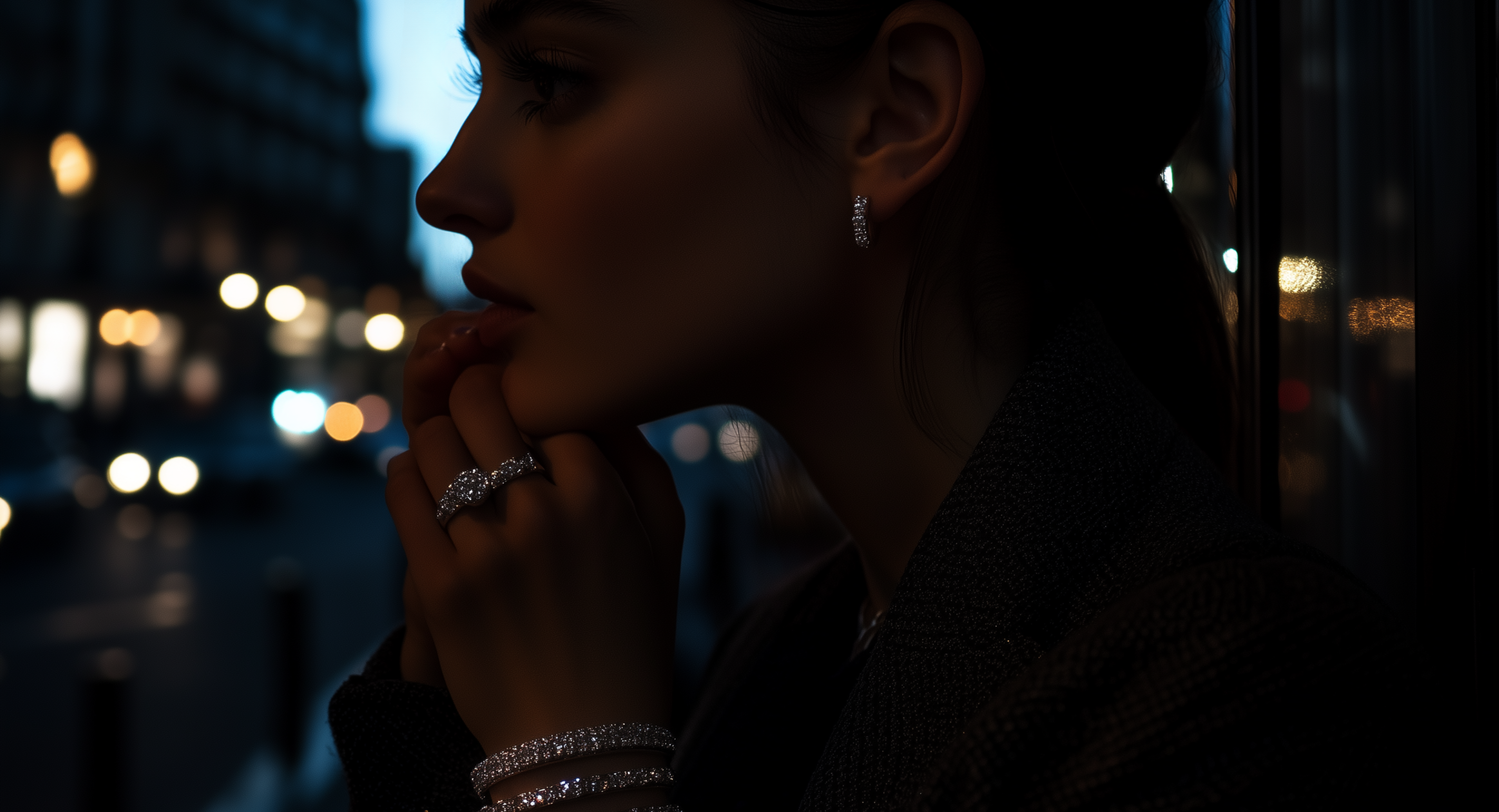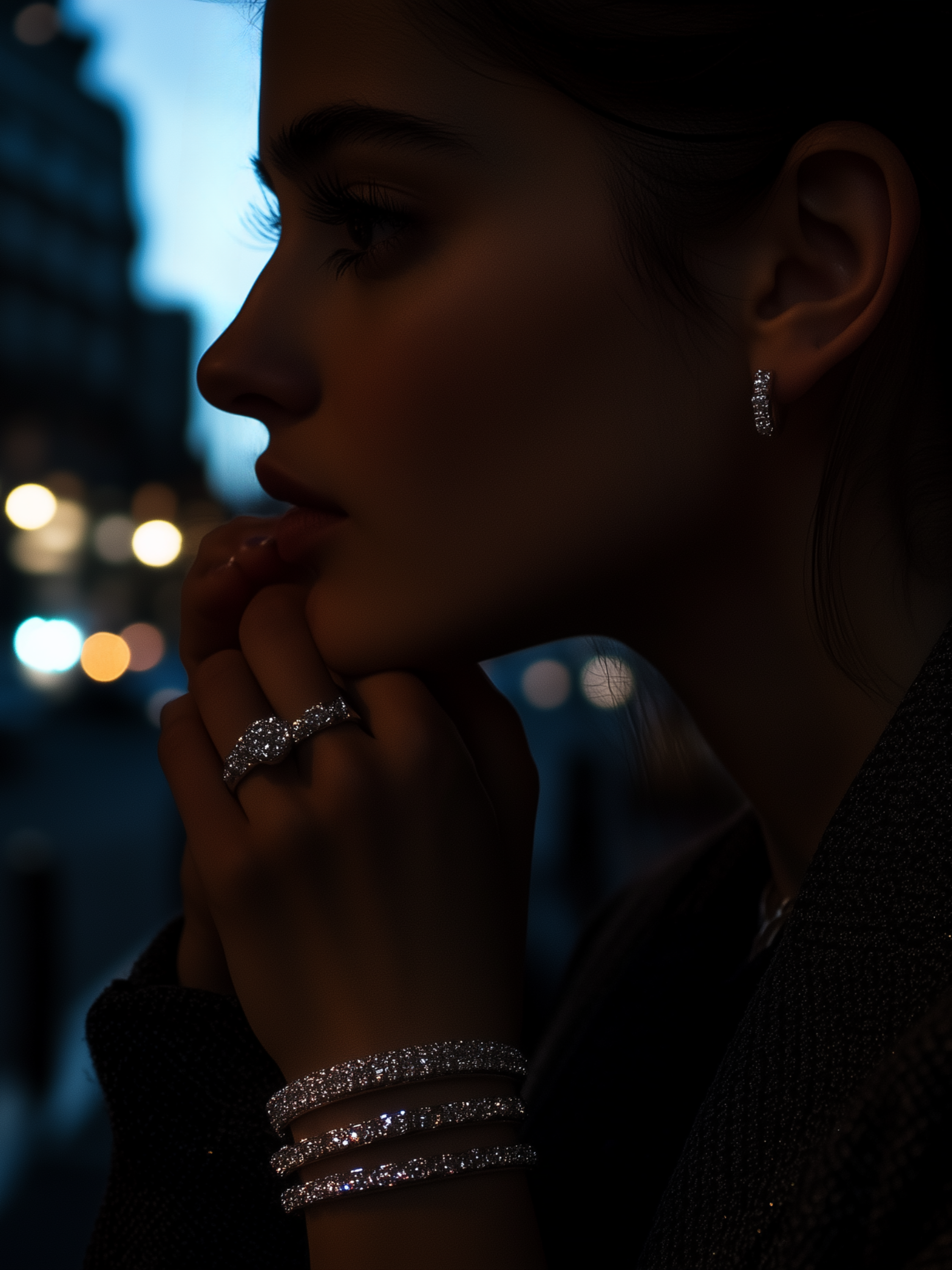Comprehensive Guide to Ear Piercing Aftercare
Welcome to our comprehensive guide to ear piercing aftercare. Whether you're a first-timer or a piercing enthusiast, understanding the importance of proper aftercare is crucial for a successful and comfortable healing process. In this guide, we'll walk you through essential steps from selecting a reputable piercing studio to long-term maintenance tips.

Ear Piercing Preparation Tips
Before getting your new piercing, there are several important steps to take to ensure a positive and complication-free experience. By following these tips, you can feel confident in your piercing journey and focus on enjoying your new look.
Choose a Professional Studio: Ensuring Safe Piercing
Selecting a reputable and hygienic piercing studio is the foundation for a safe piercing. Prioritise studios that maintain strict cleanliness standards, utilising sterilised equipment and adhering to rigorous safety protocols. Professional studios use single-use, hollow needles for precise and clean piercings, minimising tissue trauma and reducing the risk of infection.
Select a Professional Piercer: Experience Matters
When it comes to piercings, expertise and experience make all the difference. Seek out piercers who specialise in ear piercings and have a proven track record within the community. Experienced professionals understand individual anatomy, recommend suitable placements, and execute piercings with unparalleled care and precision.
Understand Piercing Methods: Needles vs. Guns
Differentiating between piercing methods is crucial for informed decision-making. While piercing guns may offer speed, they pose risks such as tissue trauma and improper angles. Needles are widely regarded as the superior method for ear piercings, providing precision and minimal trauma.
Understanding the Piercing Process
Before diving into aftercare, it's vital to comprehend the piercing process itself. Depending on the piercing location, such as the earlobe or cartilage, your piercer will use a sterilised needle or piercing gun. Despite individual pain tolerance, rest assured the process is quick and relatively painless.
Select Suitable Jewellery
The final step in preparing for your piercing is selecting suitable jewellery. Opt for high-quality materials like 14k gold or quality silver, as these hypoallergenic metals promote optimal healing and minimise the risk of irritation or infection. Avoid low-quality jewellery that may contain harmful substances, which can lead to complications during the healing process.
By following these tips and working with a trusted, professional piercing studio, you can embark on your piercing journey with confidence, knowing that your health and safety are the top priorities.

Ear Piercing Aftercare Instructions
Aftercare is crucial for a smooth healing journey and minimising complications. Stay tuned for our next section, where we'll dive into essential aftercare practices, including cleaning techniques, hygiene tips, and signs of infection to watch for. With proper aftercare and attention, you can enjoy your new ear piercings while ensuring optimal healing and comfort.
First, let's cover general cleaning and hygiene tips applicable to all piercings before delving into specifics:
How to Clean Your Ear Piercing
Clean your piercing twice daily using a sterile saline solution or a mild, fragrance-free soap and warm water. For a saline solution, mix 1/8 to 1/4 teaspoon of non-iodized sea salt in one cup (8 oz) of warm distilled or bottled water. Gently dab the solution onto the piercing using clean cotton balls or a soft cloth, avoiding any vigorous scrubbing. Rinse the area thoroughly and pat dry with a clean, soft cloth. Avoid using harsh chemicals, alcohol-based products such as rubbing alcohol, or over-the-counter antibacterial ointments, as these can irritate the delicate pierced area and disrupt the healing process.
Avoid Touching
Refrain from twisting or touching your piercing, as this can introduce bacteria and delay the healing process. Keep your hands clean and away from the piercing site, and resist the urge to fidget with the jewellery. Touching the piercing can also lead to the development of crusties or bumps, which can complicate the healing.
Proper Hygiene
Maintain good overall hygiene by keeping your hair, cosmetics, and other products away from the piercing. Avoid using hairspray, lotions, or other products near the piercing, as they can contain irritants that may hinder healing. Opt for over-the-ear headphones during the initial healing period and steer clear of swimming until the piercing has fully healed, as both can introduce bacteria and disrupt the delicate healing process.
Allow Appropriate Healing Time
Understand that piercing healing times can vary depending on the individual and the type of piercing. Earlobe piercings typically heal within 6-8 weeks, while cartilage piercings may take 4-12 months to fully heal. The healing process can be influenced by factors such as your overall health, the care you provide, and any complications that may arise.
Potential Complications
While ear piercings are generally safe, it's important to be vigilant for any signs of infection, such as redness, swelling, pus, or excessive pain. If you experience these symptoms, seek medical attention promptly. Infection can lead to further complications, such as scarring or the need to remove the piercing, so it's crucial to address any issues quickly and under the guidance of a professional.
Long-Term Piercing Maintenance Tips
Even after the initial healing period, maintain the integrity of your piercing by regularly cleaning your earrings and avoiding heavy or dangly options that can cause stretching or tearing. Consult your piercer if you notice any signs of irritation or infection, such as redness, swelling, or the formation of bumps. Consider incorporating gentle saline solution soaks into your aftercare routine, especially for cartilage piercings, to soothe any discomfort and aid in the healing process.
By following these comprehensive aftercare instructions and staying in close communication with your experienced piercer, you can ensure a smooth healing process and enjoy your new piercing for years to come.
Aftercare Tips for Based on Ear Piercing Location
When it comes to ear piercing aftercare, the specific location of your new piercing can have a significant impact on the recommended care routine and healing timeline. Let's explore the unique considerations for some of the most popular ear piercing placements.

Standard Ear Lobe Piercing Aftercare
The classic lobe piercing, situated through the fleshy lower part of the earlobe, is a popular and versatile choice. Offering a broad spectrum of jewellery options, from understated studs to elaborate dangles, lobe piercings appeal to individuals of all ages, genders, and cultural backgrounds.
"After the piercing procedure, practitioners typically provide comprehensive guidance on aftercare routines, which usually entails cleaning the pierced area with a saline solution or mild soap and water, refraining from touching or rotating the jewellery, and avoiding exposure to bodies of water such as pools or hot tubs until complete healing. The healing duration for lobe piercings can vary based on individual factors like overall health, immune response, and adherence to aftercare practices. On average, these piercings take around six to eight weeks to fully heal.” -Svet, Lark & Berry lead stylist and piercer

Helix/Forward Helix Piercing Aftercare
Helix piercings, also known as forward helix piercings, involve puncturing the outer edge of the ear cartilage. Unlike lobe piercings, which take place on the fleshy part of the earlobe, helix piercings target the upper, outer edge of the ear. Forward helix piercings, in particular, focus on the portion of cartilage facing forward, closest to the face.
"For many, helix piercings have a pain level similar to an upper lobe piercing. The majority of clients would rate this piercing 5 out 10 on the pain scale. The healing time for any piercing is a unique and individual process. It can take 6-9 months and in some cases up to 12 months to fully heal the cartilage after a helix piercing. Don’t get tricked by the completely healed looking piercing on the outside - the cartilage inside can be damaged if the client prematurely decides to change the earring or downsize the bar. Patience is the key here. Infections will occur if the cleaning routine is neglected or even by over-touching and constantly moving the earring. Choosing a stud over a hoop for helix often helps to prevent pulling while sleeping on that side and even speeding up the healing process. The length of the piercing bar and the size of the hoop play a key part here - always trust the advice given by your professional piercer.”
When caring for a helix or forward helix piercing, it's crucial to cleanse the site twice daily with a saline solution or mild soap and water. The healing period for helix piercings typically spans three to six months on average.
Conch Piercing Aftercare
Conch piercings target the conch—the central part of the ear's cartilage—providing versatility in jewellery selection, with options ranging from studs and rings to hoops. Whether situated on the inner or outer conch, this piercing enables individuals to express their unique style preferences.
"Conch piercings are often described as having a moderate pain level, comparable to that of a helix or upper lobe piercing. On a scale of 1 to 10, many clients rate the pain around a 5."
Throughout the healing period, which can extend from six to twelve months, it's essential to maintain diligent aftercare practices to support optimal healing and minimise complications.
Tragus Piercing Aftercare
Tragus piercings target the small cartilage area above the ear canal, offering a chic and distinctive option for ear embellishment. During the healing process, which typically spans six to twelve months, it's advisable to commence with smaller, delicate earrings before transitioning to larger ones.
"To expedite healing, opt for a 1.2mm gauge barbell, sized appropriately based on cartilage thickness. While some swelling and discomfort are normal, minimal pain is experienced due to the absence of nerve endings in the area. Innovative jewellery options, such as crescents or dangling charms, add a personalised touch, while double piercings, known as snake bites, exude a trendy vibe."
Elevate Your Style with Lark & Berry's Curated Ear Piercing Experience
As you embark on your ear piercing journey, remember to prioritise precise aftercare, adhering closely to your piercer's instructions to ensure a smooth healing process. With Lark & Berry's expert guidance and support, feel empowered to explore multiple piercings while maintaining optimal health and safety. Whether you're going for a subtle, minimalist look or a bold, statement-making style, our team is here to help you achieve your desired aesthetic.
At Lark & Berry, we pride ourselves on not only providing exceptional piercing services but also fostering a culture of inclusivity and self-expression. Our diverse range of high-quality earring options ensures that there's something for everyone, from classic designs to cutting-edge trends. Plus, with our commitment to sustainability and ethical practices, you can feel good about enhancing your style while minimising your environmental impact.
And don't forget, at Lark & Berry, you have the option to get multiple piercings at once, allowing you to curate your ear stack to perfection. Just remember to always follow the aftercare instructions diligently to promote healing and prevent complications.
So, whether you're a piercing newbie or a seasoned enthusiast, let Lark & Berry be your ear piercing catalyst for self-expression and style elevation, transforming your look and unleashing your inner fashionista!



